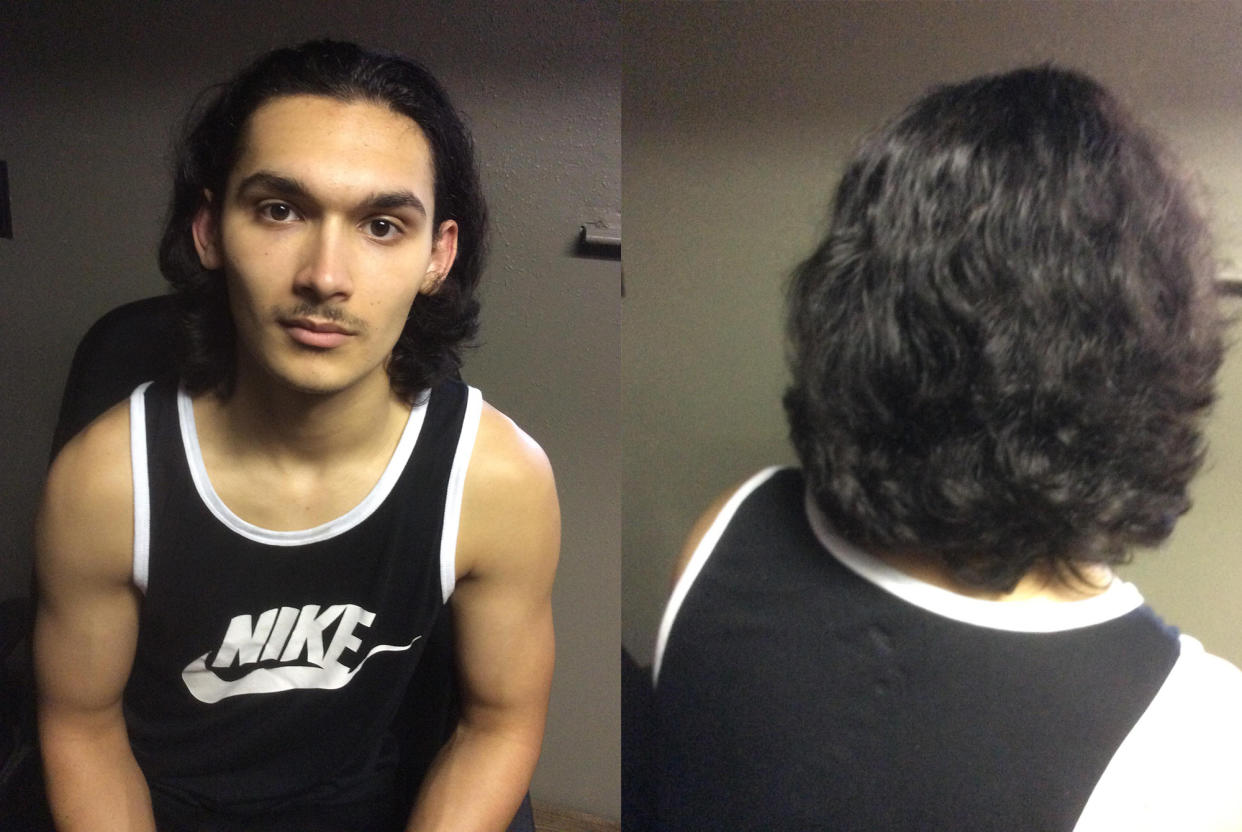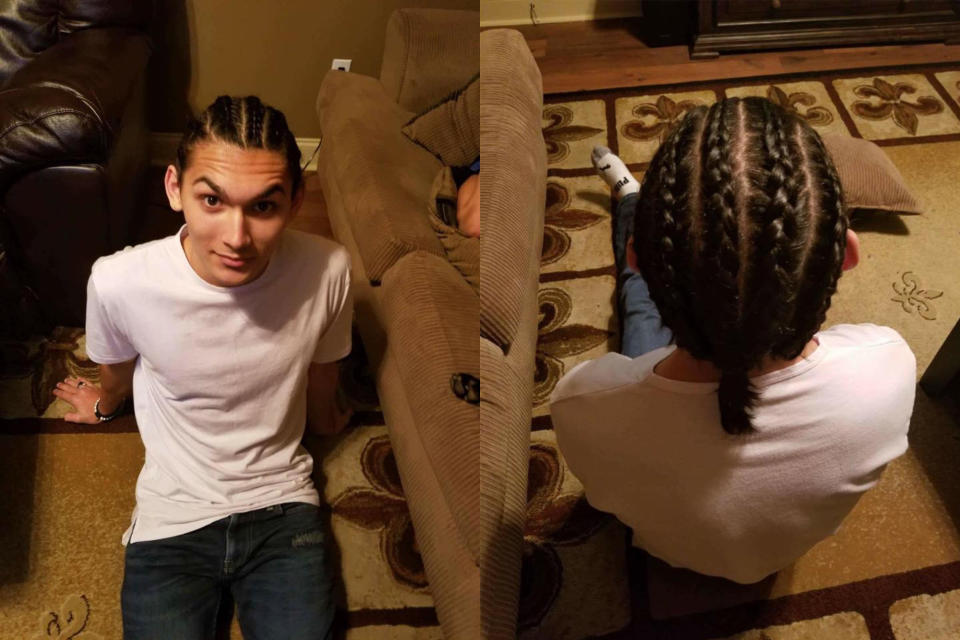How does a child's hairstyle interfere with education? Not the way most schools think.

This week, a high school student in Walker, La., revealed that he’s been threatened with expulsion for wearing his hair at chin length. In early March, a girl in third grade was sent home for having playful designs cut into her hair, and a 14-year-old boy was recently suspended for something similar. These are just the latest stories of kids whose hair was deemed in violation of their school’s dress code — rules whose text often vaguely alludes to “distracting” styles or anything that “interferes with a student’s performance.”
But when teachers and administrators call out kids, often students of color, for their appearance, many of the children and their parents are asking: What’s the real distraction here?
“Unless it’s unhealthy, in terms of germs or disease-causing problems — that would be hard to fathom — there’s nothing concerning about [a child’s haircut] at all,” Deborah Gilboa, a family doctor and parenting expert, tells Yahoo Lifestyle. “It’s much more disruptive, not just of that child’s education but of all children’s education, to pull that kid out, to have him and his peers buzzing about, ‘Is his hair going to get him in trouble?’ That drives a wedge between the educators and the students, and puts them on opposite sides of an issue that doesn’t have to be an issue.”
Jeremy McLain, the long-haired student in Louisiana, posted an online petition arguing just this point.
“The Livingston parish school board is threatening to expel me if I don’t have my hair cut!” he wrote on the page, which has almost 18,000 signatures so far. “A public school — that society’s taxes pays for — is willing to deny a child an education because of the way they look. Your hair should never get in the way of your education. Livingston Parish School Board should abolish this unnecessary rule.”
According to the Baton Rouge Advocate, the Livingston Parish school district contends that its dress code is meant to create “the best atmosphere for teaching and learning.” But Chris Emdin, an associate professor of science education at Teachers College, Columbia University, says that restrictive dress codes often have the opposite effect by fomenting this kind of conflict with kids.
“You can’t have adults identify what the distractions are for young people; you have to have young people engage in the conversation,” explains Emdin, author of For White Folks Who Teach in the Hood, and the Rest of Y’all, Too. “I’ve worked in schools all across the country, researching with young folks about what gets in the way of their teaching and learning, and what I find in my research is that adults get so much in the way of the education.”

It’s no coincidence that nonwhite children are often the ones getting disciplined for this type of infraction, Emdin says, as schools have a long history of using uniforms and rules to make children leave their cultural identities behind. Much the way schools in the 19th century forced Native American children to cut off their hair, schools in 2018 are sending boys home for wearing their hair in braids.
Fashion and hairstyles aren’t just about trends for some children, Emdin adds. “Often, though not always, they come from socioeconomic spaces that deprive them from an appreciation of the arts and culture, and the chief mechanism for them to be able to tap into artistic and cultural [expression] is through what they wear and what they listen to,” he says. “If your chief method for expressing your creativity is being policed, it does damage to your psyche.”
Often when Yahoo posts articles about kids fighting back against dress codes, there is a chorus of commenters who say kids need to suck it up and learn to follow rules, whether they like them or not, because that’s how the world works. That’s only partially true, according to Gilboa. Children should follow rules, but adults also owe it to them to offer rational reasons behind those rules.
“We spend a great deal of our time telling kids that they can’t accept anything at face value, that if they want to bring us a fact or information, they have to be able to not only quote who their source was but also have judgment to know if that was a reasonable, evidence-based source or if that was just an opinion,” Gilboa says. “We can’t say to that same generation, ‘You should check your sources and question your sources in every other situation, but not when it’s me.'”
If kids don’t agree with the reasoning behind these rules, the solution shouldn’t just be to disobey them, she says. Parents and educators can help kids learn how to push back in a more productive way.
“Teaching kids how to create change within the systems in which they live, respectfully — that’s an incredibly useful skill,” says Gilboa.
As awkward as it may be to compare being dress-coded to experiencing a mass shooting, Emdin says that the Parkland, Fla., students are providing a blueprint for young people who want to speak up, particularly using social media.
“It’s important to create a platform to allow your voice be heard and to allow other folks who are going through the same experiences to be able to rally together and change what the norms are,” he says.
Compared with the many other hurdles that black and Latino students face in school and society, fashion and hair may fall lower on the list of priorities, both experts acknowledged. That’s why it might help if their white allies took the opportunity to speak up on this issue instead.
“The parent of a child of color might very well say, ‘We’ve got bigger fish to fry. This is not important enough for you to put yourself in the line of fire,’” Gilboa says. “Then I think it puts the burden on kids who are not in that situation to speak up more often against injustice.”
Read more from Yahoo Lifestyle:
Follow us on Instagram, Facebook, and Twitter for nonstop inspiration delivered fresh to your feed, every day.

